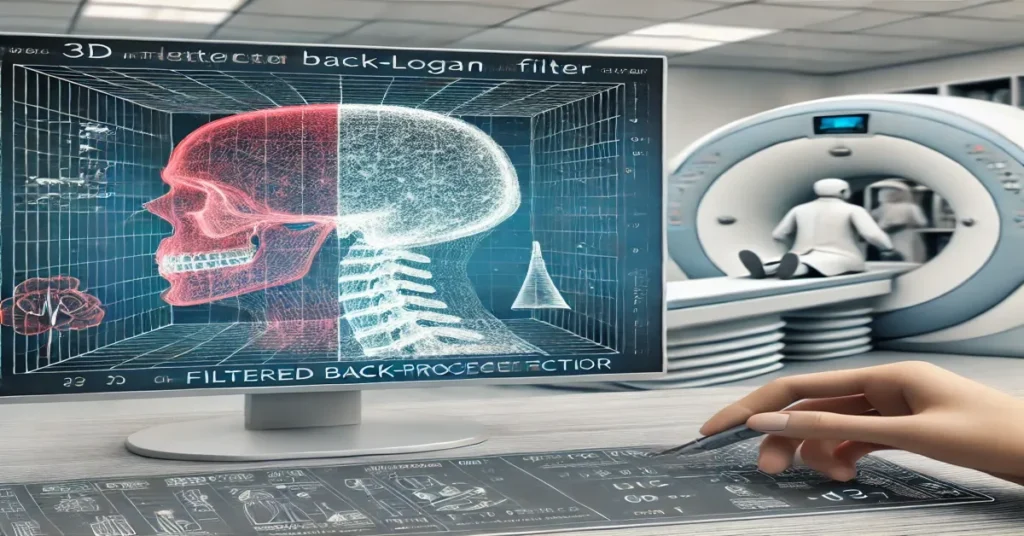Cone-Beam Computed Tomography (CBCT) is a significant advancement in imaging technology, providing three-dimensional reconstructions of anatomical structures with high accuracy. CBCT is widely used in dental imaging, orthopedics, and other medical fields requiring detailed visualization of complex structures. At the heart of CBCT is the reconstruction process, which translates raw data from a scan into interpretable images. This process often relies on mathematical algorithms, and the Shepp-Logan filter is a critical component in enhancing image quality during reconstruction cbct reconstruction shepp-logan filter.
Basics of Image Reconstruction in CBCT
Image reconstruction in CBCT involves processing X-ray projections acquired from multiple angles to produce a 3D representation. This process typically uses filtered back-projection (FBP), a standard algorithm for reconstructing images in tomographic imaging.
Key steps in CBCT reconstruction include:
- Projection Data Collection: Acquiring 2D X-ray images at different angles around the object.
- Preprocessing: Correcting distortions, noise, and other artifacts in raw data.
- Application of a Filter: Applying a mathematical filter to adjust the data.
- Back-Projection: Combining filtered data from all projections into a 3D volumetric image.
The filter used in the reconstruction process plays a pivotal role in shaping the accuracy, clarity, and noise suppression in the final image. Among these filters, the Shepp-Logan filter has garnered attention for its balance of resolution and noise reduction.
Understanding the Shepp-Logan Filter
The Shepp-Logan filter is a mathematical function designed to enhance image quality in tomographic reconstructions. It modifies the frequency content of projection data to emphasize edges and improve contrast.
Origins of the Shepp-Logan Filter
Developed as part of advancements in computerized tomography, the Shepp-Logan filter is based on principles of signal processing. It is named after the Shepp-Logan phantom, a synthetic model of the human head frequently used for testing imaging algorithms.
Mathematical Formulation
The Shepp-Logan filter is derived from the Ramachandran-Lakshminarayanan filter but includes an additional sinc function to smooth high-frequency components: H(f)=Rect(f)⋅sinc(ffmax)H(f) = \text{Rect}(f) \cdot \text{sinc}\left(\frac{f}{f_{\text{max}}}\right)H(f)=Rect(f)⋅sinc(fmaxf) Where:
- H(f)H(f)H(f): Filter function in the frequency domain.
- Rect(f)\text{Rect}(f)Rect(f): A rectangular function limiting the bandwidth.
- sinc(x)\text{sinc}(x)sinc(x): The sinc function sin(πx)πx\frac{\sin(\pi x)}{\pi x}πxsin(πx).
This formulation ensures that while high-frequency noise is reduced, essential features in the data, such as edges, are preserved.
Role in CBCT Reconstruction
In CBCT reconstruction, the Shepp-Logan filter helps to:
- Reduce noise by suppressing irrelevant high-frequency data.
- Preserve edges and contrast in the reconstructed image.
- Enhance the visualization of complex anatomical structures.
Advantages of Using the Shepp-Logan Filter
- Improved Image Quality: The filter enhances edge detail, crucial for diagnostic accuracy.
- Noise Reduction: By attenuating high-frequency noise, it improves signal-to-noise ratios.
- Versatility: Effective for a range of imaging applications, including dental, maxillofacial, and orthopedic scans.
- Efficient Computation: The mathematical simplicity of the filter allows for fast processing, essential in clinical settings.
Limitations and Challenges
While the Shepp-Logan filter is powerful, it has some drawbacks:
- Resolution Trade-off: Suppressing high frequencies can sometimes reduce the sharpness of fine details.
- Computational Demands: Although efficient, implementing the filter in high-resolution datasets requires significant processing power.
- Artifacts: Depending on scan conditions, artifacts such as streaking may still appear in the reconstructed image.
Comparison with Other Filters
To appreciate the Shepp-Logan filter’s strengths, it’s helpful to compare it with other filters used in CBCT reconstruction:
- Ram-Lak Filter: Provides sharp edges but can amplify noise in the image.
- Hamming Filter: Reduces noise more effectively than the Shepp-Logan filter but sacrifices edge sharpness.
- Hann Filter: Balances noise reduction and detail preservation but may not match the Shepp-Logan filter’s edge-enhancing capabilities.
Each filter has its strengths and applications, and the choice depends on clinical requirements and imaging conditions.
Practical Applications of the Shepp-Logan Filter
The Shepp-Logan filter is used in various CBCT applications:
- Dental Imaging: Provides high-resolution images of teeth and jaw structures, aiding in implant planning and diagnosis.
- Orthopedics: Helps visualize bone structures for fracture assessment and surgical planning.
- Oncology: Assists in tumor localization and treatment planning in radiotherapy.
Optimizing CBCT Reconstruction with the Shepp-Logan Filter
To achieve optimal results, consider the following practices:
- Calibration: Ensure accurate alignment and calibration of the CBCT scanner to minimize artifacts.
- Data Preprocessing: Use advanced noise-reduction techniques before applying the filter.
- Parameter Tuning: Adjust filter parameters, such as the cutoff frequency, to balance noise suppression and detail preservation.
- Post-Reconstruction Enhancements: Apply image enhancement techniques, such as contrast stretching, to improve diagnostic utility.
Future Directions in CBCT and the Shepp-Logan Filter
Advances in computational power and algorithms continue to expand the potential of CBCT and the Shepp-Logan filter:
- Machine Learning Integration: Combining the Shepp-Logan filter with AI-driven algorithms for adaptive filtering and noise reduction.
- Real-Time Reconstruction: Leveraging parallel computing to enable real-time image reconstruction with high accuracy.
- Customized Filtering: Developing patient-specific filtering techniques to optimize reconstruction based on anatomical variations.
Conclusion
The Shepp-Logan filter is a cornerstone in CBCT reconstruction, offering a balanced approach to enhancing image quality while minimizing noise. Its mathematical rigor and practical efficacy make it a valuable tool in medical imaging, ensuring accurate diagnostics and efficient workflows.
By understanding its principles, applications, and optimization strategies, healthcare professionals and imaging specialists can harness the full potential of the Shepp-Logan filter in delivering high-quality CBCT reconstructions.
FAQs
1. What is the primary purpose of the Shepp-Logan filter in CBCT reconstruction?
The Shepp-Logan filter enhances image quality by suppressing high-frequency noise and preserving essential features like edges and contrast in the reconstructed images.
2. How does the Shepp-Logan filter compare to other filters used in CBCT?
The Shepp-Logan filter strikes a balance between noise reduction and edge preservation, whereas filters like Ram-Lak focus more on edge sharpness, and Hamming filters prioritize noise suppression.
3. What are the limitations of the Shepp-Logan filter?
The main limitations include potential loss of fine details due to frequency suppression, computational demands for large datasets, and susceptibility to artifacts under certain conditions.
4. In which medical fields is the Shepp-Logan filter most commonly applied?
It is widely used in dental imaging, orthopedics, and oncology for tasks such as implant planning, fracture assessment, and tumor localization.
5. How can the Shepp-Logan filter be optimized for better CBCT reconstruction?
Optimization involves calibrating the scanner, preprocessing data to reduce noise, tuning filter parameters, and applying post-reconstruction enhancements to improve image clarity.
6. What advancements are expected in CBCT reconstruction using the Shepp-Logan filter?
Future advancements include the integration of AI for adaptive filtering, real-time reconstruction capabilities, and patient-specific filtering techniques for personalized imaging solutions.







